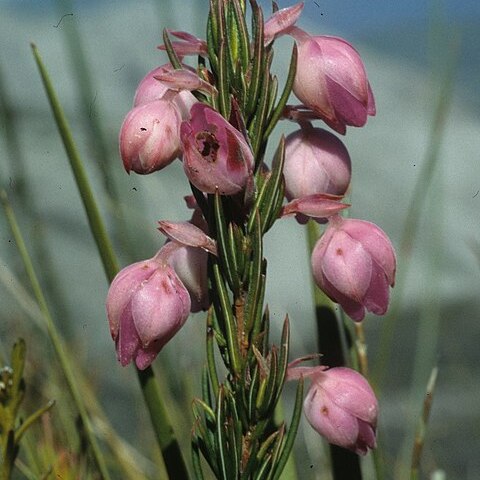Erect shrub up to 90 cm (3 ft) or so. Branches stout, pubescent. Leaves 3-nate, 1-1.6 cm long, suberect, linear-subulate, acute, mucronate, pilose-pubescent or glabrous, the younger ciliate. Flowers mostly 3-nate, terminal, cernuous; peduncles 3-8 mm long, pubescent; bracts median, 2 mm long, ovate-lanceolate, scarious, coloured. Sepals 5-9 mm long, ovate, acute, imbricate, keeled or keel-tipped, scarious, puberulous, mostly somewhat spreading at full maturity and shorter than the corolla, rosy-red. Corolla 7-10 mm long, campanulate-cyathiform, almost four-sided, dry, glabrous or, less commonly, pubescent, rosy; lobes 1/2-2/3 the length of the tube, slightly spreading, at length connivent and turning darker in colour. Anthers included, 0.7 mm long, lateral, oblong, scabrid, appendiculate; pore 1/2 the length of the cell; crests 1/2-3/4 the length of the cell, oblong, toothed towards the apex. Ovary oblong, on a large, dark-coloured disk, glabrous; style included; stigma clavate-capitellate.
Erect shrublet to 90 cm. Flowers medium, campanulate, pink with darker sepals, finely hairy.

